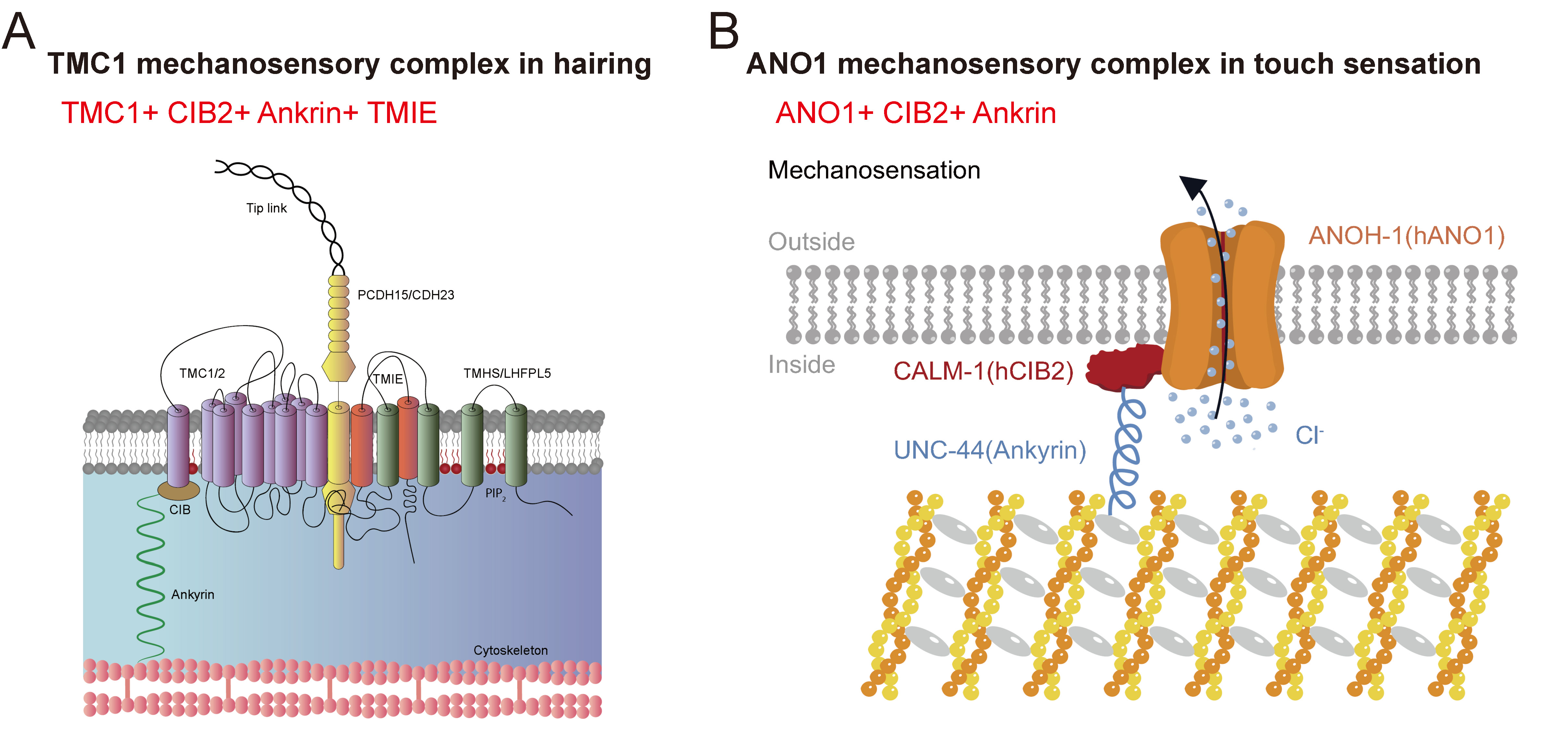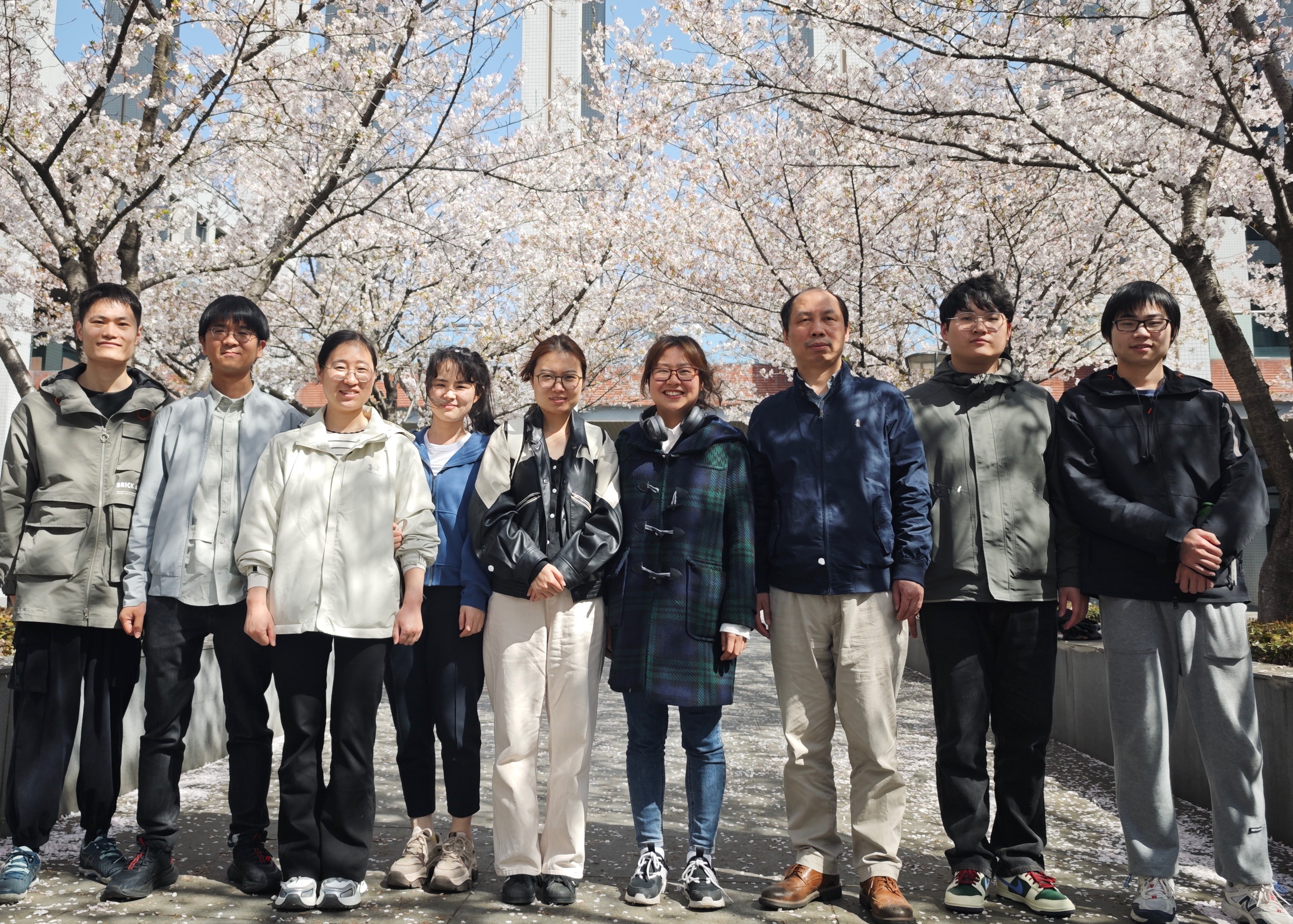KANG Lijun's group published in Nature Communications on mechanosensation
Mechanotransduction plays a critical role in various physiological processes, including hearing, touch, proprioception, pain, and blood pressure regulation. Mechanogated ion channels function as mechanoreceptors, converting mechanical forces into electrical signals to transduce force information. To date, all known mechanotransduction channels in the animal kingdom are either cation channels or channels permeable to cations (such as Piezo1/2, TMC1, TRP-4/NomPC/TRPN, ENaC, TMEM63, and K2P), with no reports of anion channels.
On February 16, 2025, Professor Lijun Kang’s team from the School of Brain Science and Brain Medicine, Zhejiang University School of Medicine, published a research article entitled “Anoctamin-1 is a core component of a mechanosensory anion channel complex in C. elegans” in Nature Communications. In this study, they discovered that the calcium-activated chloride channel Anoctamin-1 (ANOH-1) mediates touch sensation of male C. elegans by directly sensing mechanical forces. The human homolog ANO1/TMEM16A shares similar mechanosensitive properties. Furthermore, mechanotransduction via ANOH-1/ANO1 requires the involvement of auxiliary molecules CIB2 and Ankrin.
In previous studies, Professor Lijun Kang’s team identified the multimodal functions of the Beethoven gene tmc1 and clarified its mechanism, proposing a dual-tether model of TMC1 as the mechanotransductive cation channel in hearing (Neuron 2018, 2021, 2024). In the current study, using molecular genetics, in vivo calcium imaging, patch-clamp electrophysiology, pharmacology, and behavioral analysis, they found that the calcium-activated chloride channel ANOH-1 is involved in the tactile responses of male C. elegans. Pharmacological and electrophysiological recordings indicated that ANOH-1 directly mediates mechanoreceptor currents (MRCs), and its mammalian homolog, ANO1, exhibits similar functions. Through gene screening and co-immunoprecipitation (Co-IP) experiments, they further found that mechanosensation by ANO1/ANOH-1 requires auxiliary molecules CIB2 and Ankrin. Interestingly, CIB2 and Ankrin are also necessary auxiliary molecules for the mechanotransduction of the TMC1 cation channel in the inner ear hair cells (Figure 1). This study, along with the team's previous research, reveals the molecular mechanisms underlying mechanotransduction in hearing, touch, and other modalities, laying the scientific foundation for research and drug development related to sensory disorders.

Figure 1 Schematic of the TMC1 and ANO1 Mechanosensitive Complex. (Adapted from Neuron 2021, Neuron 2024, and Nature Communications 2025, published by Prof. Lijun Kang's group)
---------------------------
LIJUN KANG’S RESEARCH GROUP
Employing an interdisciplinary strategy that integrates molecular genetics, optogenetics, calcium imaging, electrophysiology, and behavioral tracking, research carried out in the Kang laboratory is dedicated to unravel the complex molecular mechanisms governing sensory perception, including olfaction, hearing, and tactile sensation. Utilizing C. elegans and various other model organisms, the laboratory delves into the physiological roles and mechanisms of glia in regulating sensory circuits. The laboratory also seeks to investigate pharmaceutical approaches for mitigating sensory dysfunctions stemming from genetic anomalies, aging, and other influential factors.








